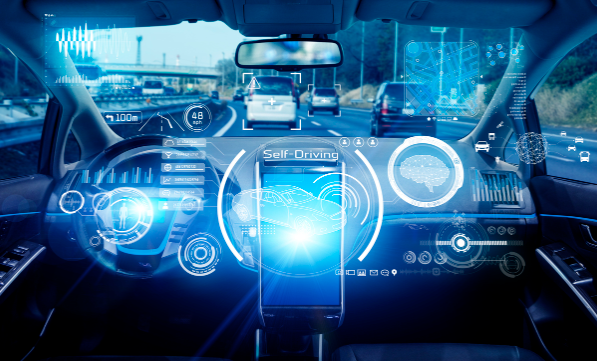
The automotive industry has been on a relentless journey of innovation, from the introduction of the first automobile to the development of electric and autonomous vehicles. Today, it stands on the precipice of a new era, with automotive technology advancements promising to reshape the way we think about transportation. What’s next for the automotive industry? Let’s explore some of the key advancements and trends that are driving the future of mobility.
1. Electric Vehicles (EVs) Domination
The shift towards electric vehicles has been one of the most profound changes in the automotive industry in recent years. The widespread adoption of EVs is poised to continue as battery technology improves, charging infrastructure expands, and governments worldwide introduce stricter emissions regulations. Automakers are investing heavily in research and development to extend the range of EVs, reduce charging times, and make them more accessible to consumers.
With a growing focus on sustainability and reduced carbon emissions, EVs are expected to dominate the market. Additionally, automakers are exploring the potential of solid-state batteries, which promise longer ranges, faster charging, and enhanced safety. This technology could further accelerate the transition to electric vehicles.
2. Autonomous Driving and Mobility as a Service (MaaS)
Autonomous vehicles are no longer confined to science fiction; they are rapidly becoming a reality. Autonomous driving technology, encompassing levels from advanced driver assistance systems (ADAS) to fully self-driving cars, is advancing at a remarkable pace. Major tech companies and traditional automakers are competing to develop and deploy autonomous vehicles on the road.
One of the significant implications of autonomous driving is the rise of Mobility as a Service (MaaS). This concept envisions a future where people rely on a mix of self-driving cars, ride-sharing, and public transportation, all seamlessly connected through apps. Autonomous vehicles are expected to enhance safety, reduce traffic congestion, and provide mobility options for those unable to drive, such as the elderly and disabled.
3. Connectivity and the Internet of Things (IoT)
The automotive industry is increasingly connected, with vehicles becoming part of the Internet of Things. Modern cars are equipped with sophisticated infotainment systems, advanced driver assistance features, and the ability to communicate with other vehicles, infrastructure, and cloud-based services. This connectivity enhances the driving experience, improves safety, and allows for over-the-air software updates, much like your smartphone.
As 5G networks continue to roll out globally, cars will benefit from high-speed, low-latency data connections. This will enable real-time communication for vehicle-to-vehicle (V2V) and vehicle-to-infrastructure (V2I) systems, making driving safer and more efficient. Additionally, it opens the door to more advanced entertainment, productivity, and navigation features inside vehicles.
4. Sustainable Manufacturing and Materials
The push for sustainability is not limited to vehicle operation; it extends to manufacturing and materials. Automakers are working on reducing the environmental impact of the entire production process. This includes adopting eco-friendly materials, optimizing manufacturing techniques to minimize waste, and reducing energy consumption.
Materials innovation is a crucial aspect of this development. Some automakers are exploring the use of recycled and renewable materials in vehicle construction, which can decrease the carbon footprint of the manufacturing process. Sustainable practices are not only environmentally responsible but also economically advantageous in an era of increased environmental regulations.
5. Artificial Intelligence (AI) and Machine Learning
AI and machine learning are transforming various aspects of the automotive industry. From autonomous driving algorithms that learn from data to predictive maintenance systems that anticipate mechanical failures, AI is enhancing vehicle performance, safety, and efficiency. Machine learning is also used in manufacturing for quality control and process optimization.
AI-powered personal assistants inside vehicles are becoming more sophisticated, allowing drivers to control various functions through voice commands and providing real-time information on traffic, weather, and nearby amenities. This trend is expected to continue, creating a more seamless and user-friendly in-car experience.
6. New Business Models
The traditional model of vehicle ownership is evolving. Car-sharing services, ride-hailing apps, and subscription-based models are changing how people access and use vehicles. Car ownership is no longer a necessity for everyone, especially in urban areas with robust public transportation and alternative mobility options.
The future may see consumers subscribing to transportation services that provide access to a fleet of vehicles for various needs, from daily commuting to weekend getaways. This shift in business models reflects changing consumer preferences, a focus on sustainability, and the pursuit of cost-effective and convenient transportation solutions.
Conclusion
The automotive industry is at a critical juncture, with technology advancements driving significant changes in how we move from one place to another. Electric vehicles, autonomous driving, connectivity, sustainability, artificial intelligence, and new business models are shaping the future of mobility.
The future promises cleaner, safer, and more efficient transportation options, with an emphasis on reducing carbon emissions and improving the overall quality of the driving experience. As automotive technology continues to evolve, the way we interact with and think about our vehicles will also transform, making the not-so-distant future an exciting time for the automotive industry and the consumers it serves.

Leave a Reply